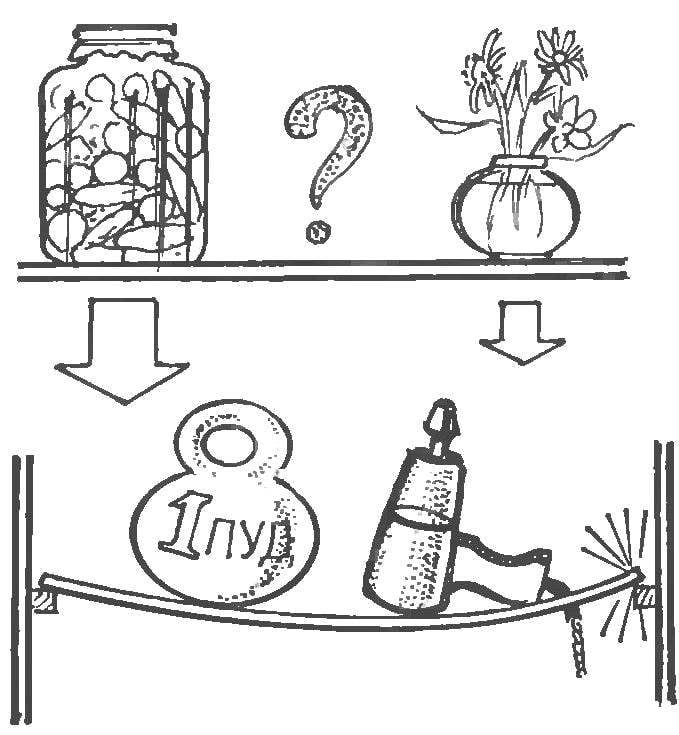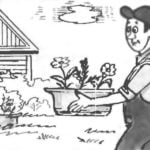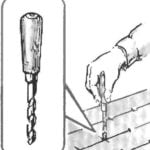 It would seem, from all furniture designs are the most simple — it’s a shelf. As a rule, it is a narrow bar of suitable material such as wood, metal or glass, based on any basis or appropriately fixed on the wall. However, the regiment executed without the required margin of safety and incorrectly mounted or suspended, face unpleasant surprises at the most unexpected point of operation: that somehow bent, then broke, all broke or fell. What is the secret of such a simple design? Consider some of them.
It would seem, from all furniture designs are the most simple — it’s a shelf. As a rule, it is a narrow bar of suitable material such as wood, metal or glass, based on any basis or appropriately fixed on the wall. However, the regiment executed without the required margin of safety and incorrectly mounted or suspended, face unpleasant surprises at the most unexpected point of operation: that somehow bent, then broke, all broke or fell. What is the secret of such a simple design? Consider some of them.
What where to put?
Two identical shelves can “lead” themselves quite differently: it would seem — and are made of the same material, and are installed one way — and one reason I caved in and another does not, although each of them were the same items
Different behavior was not in the shelves (1), and the placement of the objects themselves. Agree: there’s an obvious difference — to put on the middle shelves flower vase weighing just 300 g, or to plant near a heavy jar of pickles. Of course, a thin shelf under the weight over time will SAG. However, it will behave reliably, if the vase will remain in the middle, and heavy jar positioning on the side closer to the supporting portion,
Just resting is not enough. Deciding to install in a Cabinet additional shelf, usually try to secure stronger support bars under it, believing that this is the secret of reliability. But it is not enough to cut off plate so that it gently rests on the bars as tightly as possible to the walls. Still need to know how to secure it to the bars, that it would not move or do not fly off even in case of strong deflection.

It would be easier: took — nailed or secured with screws. Option, of course, the most affordable, but not optimal: if you need to remove the shelf — break, pull back?
There are two not complex splice variant of the shelf supporting bars (2). The first will protect it from accidental shifting. To this end, the end of the flange is cut a small groove, and the bar is fixed return boss. The second connection method is universal: it will hold the shelf and shear, and excessive deflection. The method consists in the fact that the shelf is drilled a hole for the fixing tenon, which is installed in the support bar.
Why broken?
When this happens with a glass shelf — clear: the material is more brittle, the tree is not to compare, heavy loads does not stand up. Why this happens with plank panel? Here the reason may lie not only in its lack of thickness, but in the internal defects of the material (3).
It is possible that in the Board, especially if it has a laminated surface, remained unnoticed crack the hidden fracture. And it is possible that the thickness of the Board was hiding the knot, which eventually, as often happens after shrinkage of the material broke loose and fell treacherously, violating the solid wood monolith. Experienced carpenters try in the manufacture of furniture from solid wood not to leave blanks in these “time bombs” and pre-drill them, carefully kleiva in the vacant place wooden plugs: so reliable.
Rescue backup
What shelf are wooden or glass — not worth it to tempt fate, and especially the shelf: stand, can not stand? It is better to promptly take care of guarantee its strength, and not necessarily due to the thickness. Practice shows that over time desagregazionny first regiment gradually is so cluttered and congested that close to disaster. But to prevent the “crash” is a snap.
For this there are a few simple ways. For example, a wooden shelf can be turned over (4) metal corners or U-shaped profiles at the edges, attaching with screws. This reinforcement greatly increase its strength, especially if it is inside the Cabinet, in the garage or workshop.

There is a generic version, applicable for any shelves, though glass. We are talking about backup (5) that are installed from the bottom in the middle or in the most loaded part of the shelf. The role of the backup can play embedded in the partition, better from the same material as that of the regiment.
Simple hanging
Simple open wall shelf hung on brackets, will decorate any interior and very comfortable to use.
The most affordable option — with angled wood bracket
(6), which is mounted on a hook in the wall thanks to the widespread in hanging pieces of furniture overhead eyelet from a metal plate with a hole. Enough two such pylons, which fit a wide Board, or cut furniture Board or particle Board.
Not much harder, but much more advantageous framework outwardly of the bracket (7), which can be made of a metal strip, bending it accordingly. However, if the metal is thin, much will depend on the shape, which only he can give. Places of bend should be as close as possible to the shelf or the bracket under load can stretch (8).

The same framework bracket can be flipped — and then he, like the wooden corner can turn into a reliable bottom, to prop up support shelves (9). But here much will depend on the thickness of the metal strip, which must be not less than 3 mm, otherwise the bracket can not withstand too much pressure on it and bend.
However, excessive loads on the shelf through the brackets to pull out of the wall and hooks, and pendants. To avoid this, the hooks must be fixed to the wall at a slight angle (10)
But if a few shelves?
If one shelf is not enough, and the space in the room enough, then there is no need to pile on the wall — then it is easy to combine a few simple shelves in an outdoor outdoor Cabinet.
Only need a couple of additional panels for the two pillars of the sidewalls of the Cabinet (11). Shelves can be mounted on wooden support bars having square or triangular cross-section. Support shelves can serve not only wood but also metal corners.

To support the Cabinet was guaranteed at the same level on both sides, and when the markup can be put together by affixing the clamps, and apply a markup on that and on another simultaneously (12). To the wall sides attached with a furniture of plate lugs or hammered into the prepared holes of metal crutches (13).
For greater stability of the Cabinet at the bottom of each of its sides is a small cutout to the wall (14), under the plinth.
B. VLADIMIROV (overview of foreign press)



